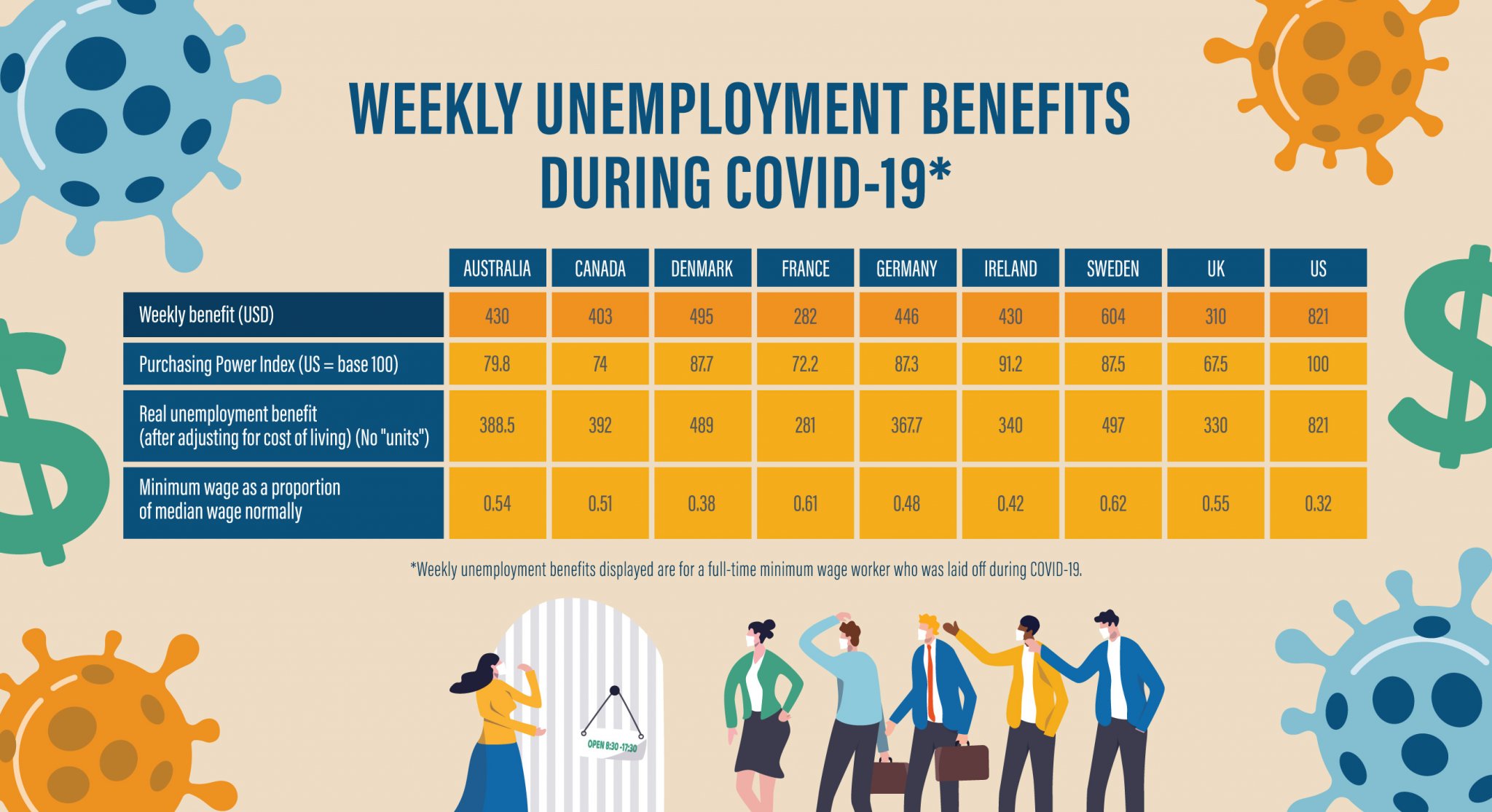As countries scrambled to keep afloat during the pandemic, unemployment and retrenched benefits were under great scrutiny as many countries took different strategies to deal with the fall out, according to new research.*
The United States, often known for its low federal minimum wage of US$7.25, which has not been increased in over a decade, soared to the top of welfare benefits from last place prior to the pandemic with a replacement rate of 2.25.
This means that for every dollar that US residents could have earned while working a minimum wage job, they would instead receive $2.25 in welfare while unemployed.
This increase in unemployment benefits was of a similar story for many countries that prior to the pandemic did not have as generous benefits schemes, such as Canada, which soared up from a 0.60 replacement rate to one of 0.95.
Conversely, countries such as Germany, Denmark and France who are often lauded for their welfare generosity in non-pandemic times, didn’t increase unemployment benefits at all when the pandemic struck.
While there was no change in the replacement rate across these countries, welfare recipients in Denmark were still eligible to receive up to 85 per cent of their previous wage back in their pockets.
This stagnation of welfare benefits meant that Denmark dropped from being the country with the highest unemployment payments prior to COVID, to fourth place during the pandemic.
For residents that lost their jobs in Germany, this number was about 70 per cent of an individual’s wage pre-COVID, going from second to seventh place out of the eight countries measured.
As for France, it dropped from fourth place with its idle replacement rate of 0.60, to eighth on the list.
Highest unemployment payments as a proportion of minimum wage:
| Before COVID-19 | During COVID-19 | |
| 1 | Denmark | US |
| 2 | Germany | Canada |
| 3 | UK | Ireland |
| 4 | France | Denmark |
| 5 | Ireland | Australia |
| 6 | Canada | UK |
| 7 | Australia | Germany |
| 8 | US | France |
The pandemic may have shaken up the charts, but as the world begins to ‘return to normal’ and COVID stimuli dries up, countries are returning to their pre-COVID positions on welfare benefits list.
* Research by Compare the Market







